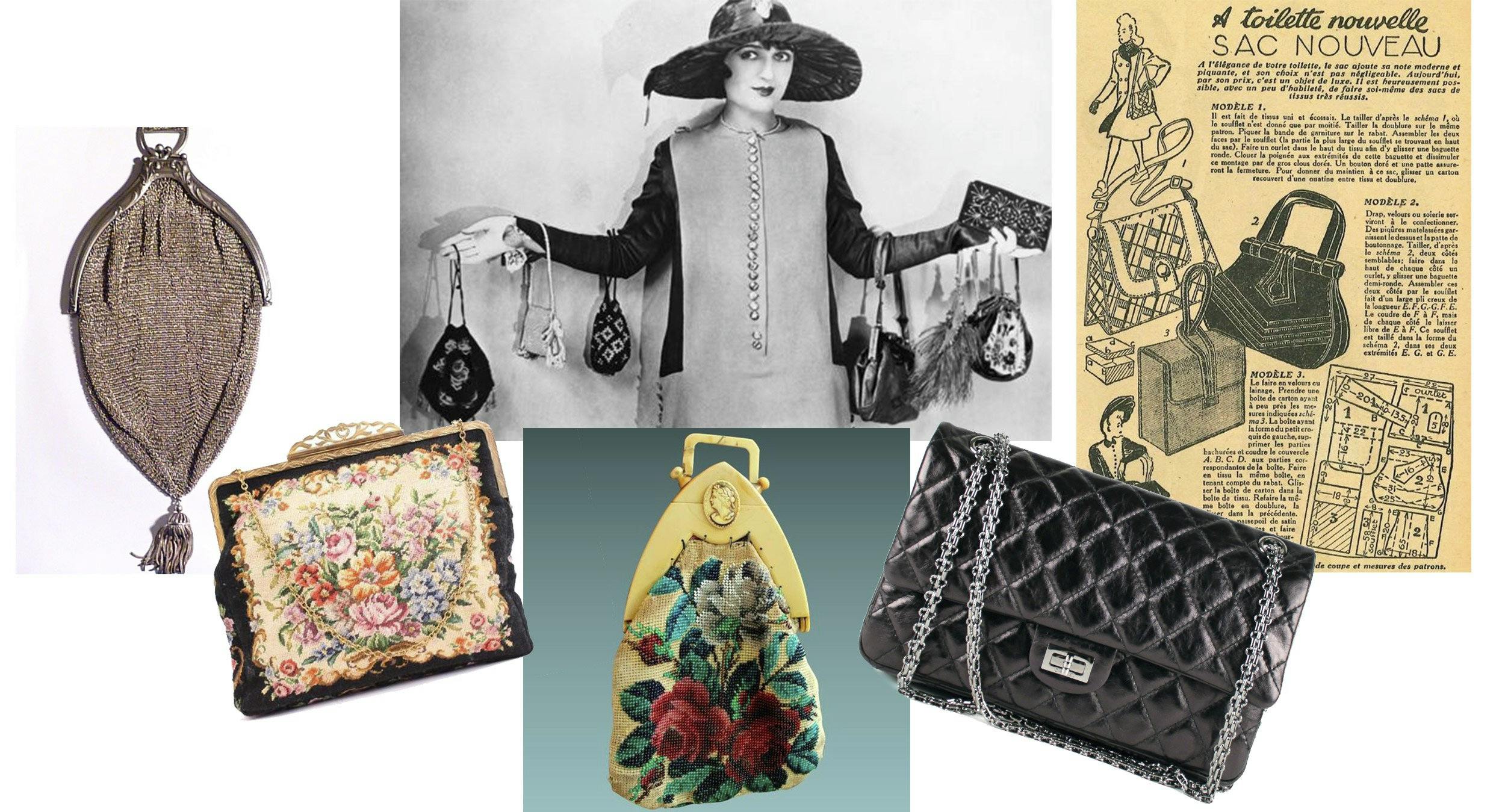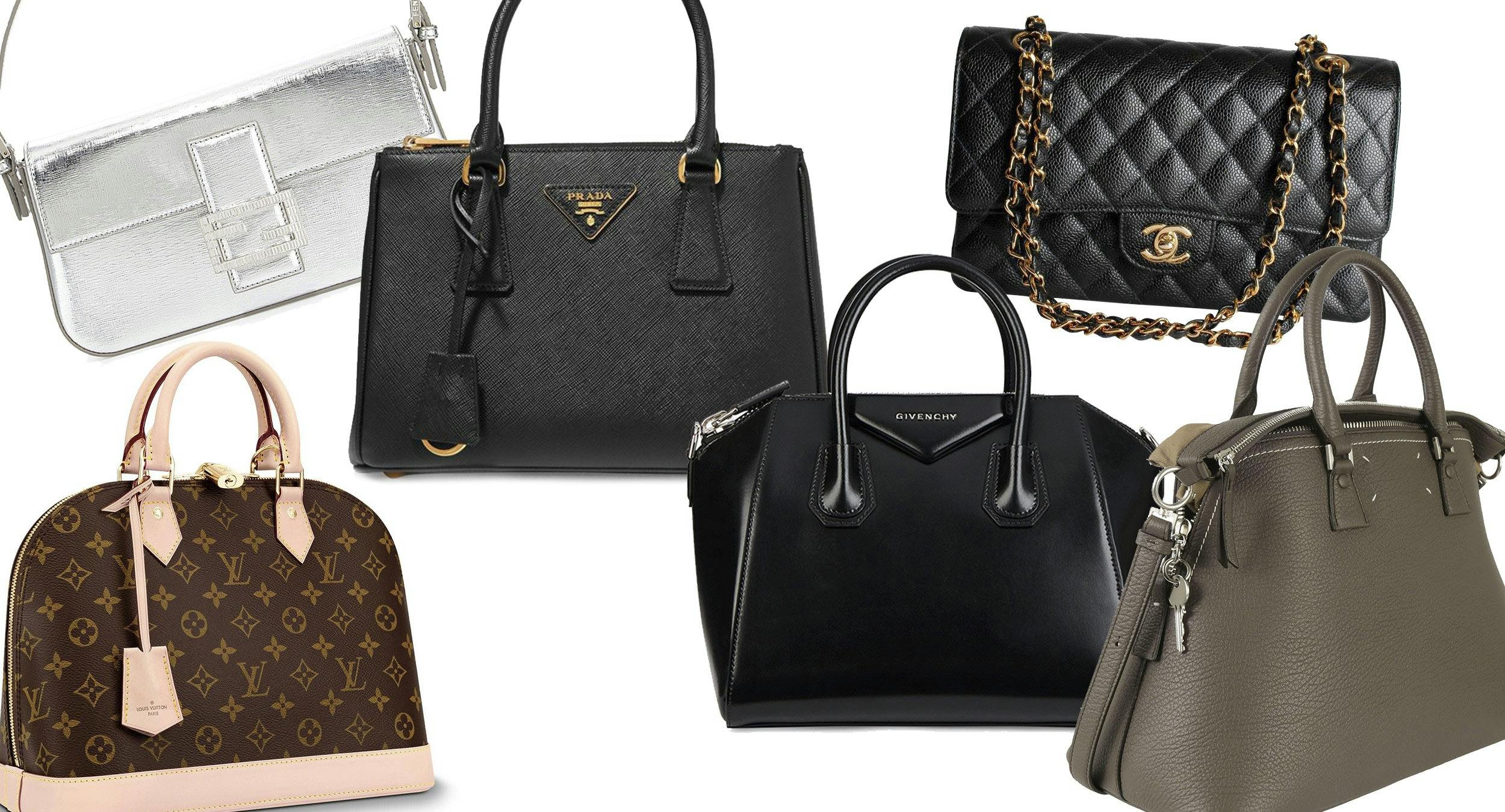ONCE UPON A TIME - The Handbag
If its first use is to carry things with you, the handbag has become an essential accessory. Useful before disappearing to become essential, the handbag is an object with multiple...
If its first use is to carry things with you, the handbag has become an essential accessory. Useful before disappearing to become essential, the handbag is an object with multiple...

If its primary use is to carry things with you, the handbag has become an essential accessory. Useful before disappearing to become essential, the handbag is an object with multiple facets.

It all started during the Antiquity, it was then a purse made of animal skin reserved for slaves, which they used to gather their master's things. In the Middle Ages, it remained purely practical, as clothes had no pockets, and it was used to carry goods. Only the richest used bags with locks to carry money and jewelry. During the Renaissance, with the advent of puffy fabrics and voluminous silhouettes, bags disappeared in favor of pouches attached to the waist, worn under ladies' petticoats and gentlemen's breeches. These bags, open on top, were accessible through slits in the garment. One keeps the necessary in the hand the remainder is dissimulated under the petticoats or entrusted to the servants, the height of the chic it is to have the free hands.

At the end of the 18th century, purses made their comeback, attached to the waist. High society had small pockets built into their clothes. The châtelaines make their appearance, gold or silver jewels worn at the waist decorated with pendants allowing to attach what one wants, useful and decorative! The first handbags as we know them appeared during the First Empire, while fashion was inspired by Antiquity. Dresses became simpler, pockets and chatelaines disappeared in favor of round or square clutches decorated with stones. In the 20s, the handbag became small, in chain mail or pearls, the minaudiere, it makes its appearance in the 30s. During the Second World War, bags made of fabric, straw or raffia were preferred to those made of leather. The latter were sent to soldiers to reinforce their uniforms.
After the war, coquetry took over and fashion innovated. Over the years, bags changed their proportions, and flagship models were created. In 55, Coco Chanel creates bags worn on the shoulder and chain straps, the 2.55 is a turning point in the history of the bag - revised in 88 by Lagerfeld to become an iconic piece of the house. Then comes the line of icons, inspiring or lending their names to models that go down in history. Hermes for example created the Birkin in 84, when Jane Birkin found herself flying next to the president of the house, during the discussion she expressed the difficulty of finding the perfect bag for the modern mother: functional and elegant. He then suggested that she design her ideal bag. The it-bag par excellence was born. The Lady Dior was renamed in 1996 in honor of Lady Diana, who fell in love with the model after it was offered to her by the Chirac family.

from left to right: Baguette Fendi, Alma Louis Vuitton, Galleria Prada, Antigonia Givenchy, 2.55 Chanel, 5AC Margiela
The race to the it-bag is launched in the 2000s. All houses are looking for a way to express their DNA through timeless and creative bag designs. And consumers are looking for the bag that best expresses their personality, the most lasting touch of luxury.
Check out our selection of tomorrow's it-bags below:

Off-White mirror bag, cassandra Saint Laurent bag, JW Anderson red bag, Guidi round tote bag, Gucci dionysus bag, Cherevichkiotvichki bag, Chloé green bag, Balenciaga bazaar shopper bag, Fendi baguette bag
The Maison Margiela bag is available atLeclaireur Sévigné andLeclaireur Boissy d'Anglas.
Your cart is currently empty.
Start Shopping